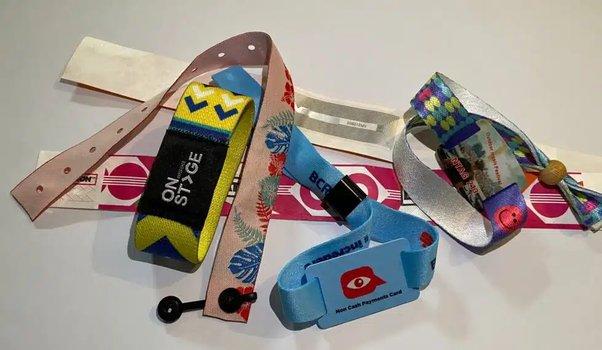
Radio Frequency Identification (RFID) wristbands are becoming increasingly popular in a range of industries, from events and festivals to hospitals and theme parks. The technology behind RFID wristbands allows for quick and efficient tracking and identification of individuals, making it a valuable tool for various purposes.
In events and festivals, RFID wristbands are used as a replacement for traditional tickets. Attendees are given wristbands that they wear throughout the event, which serve as their admission ticket and also provide access to other features such as food and drink stands, restrooms, and even VIP areas. This not only simplifies the admission process but also provides organizers with valuable data on attendee behavior and preferences.
Hospitals are also beginning to adopt RFID wristbands for patient identification and tracking. The wristbands can store important information about a patient's medical history and treatment plans, making it easier for healthcare professionals to access this information in real-time. This can improve patient safety and reduce the risk of medical errors, as well as help healthcare providers deliver better care.
Theme parks and amusement parks are also starting to use Radio Frequency Identification Wristbands to enhance the guest experience. With RFID technology, guests can easily access and pay for food, drinks, and merchandise without having to carry cash or cards. They can also use their wristbands to access rides and attractions, bypassing traditional ticket lines. This can save time and make the overall park experience more enjoyable.
Another advantage of RFID wristbands is the ability to gather data on customer behavior and preferences. This information can be used to personalize the guest experience and improve customer satisfaction. For example, theme parks can use data gathered from RFID wristbands to identify the most popular rides and attractions, and then make improvements and changes to enhance the guest experience.
Despite the many benefits of RFID wristbands, there are also some potential drawbacks and challenges to consider. One concern is privacy, as the data collected by RFID wristbands can be used to track and monitor individuals. There have also been concerns about the security of RFID technology, as wristbands can be easily lost or stolen, putting sensitive information at risk.
Another challenge with RFID wristbands is the cost. RFID technology is relatively expensive, and the cost of producing wristbands for large events or theme parks can be substantial. There is also the cost of deploying and maintaining the necessary infrastructure to support RFID technology.
Overall, RFID wristbands are a valuable tool for various industries, offering a range of benefits from improving the guest experience to enhancing patient safety. However, it's important to consider the potential drawbacks and challenges and weigh them against the benefits to determine whether RFID wristbands are the right choice for your specific needs.
In conclusion, the use of RFID wristbands has the potential to revolutionize various industries and improve the overall experience for guests and patients alike. The benefits of RFID wristbands, such as increased efficiency, improved safety, and enhanced guest experience, make them a valuable tool for organizations looking to stay ahead of the curve. With the right infrastructure and security measures in place, RFID wristbands can be a game-changer in a range of industries, offering a seamless and personalized experience for all. Contact Wristbands Europe for RFID wristbands or another type of custom wristbands.
